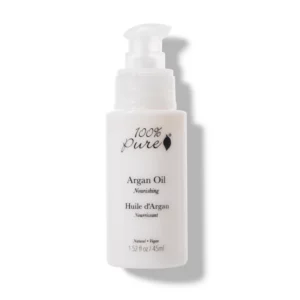Repair and Restore

Having damaged hair can be a real struggle, with issues such as breakage, split ends, and dullness affecting the overall health and appearance of your locks. However, with the right products, you can effectively repair and restore your damaged hair, giving it a new lease of life. In this beauty blog, we will explore the best products that can help you on your journey to healthier, more resilient tresses.
- Restorative Shampoos: The foundation of any haircare routine for damaged hair starts with a restorative shampoo. Look for shampoos specifically formulated to repair and strengthen damaged strands. These shampoos often contain ingredients like keratin, hydrolyzed proteins, or botanical extracts that help to nourish and fortify the hair, promoting repair from within.
- Nourishing Conditioners: Pair your restorative shampoo with a nourishing conditioner to further hydrate and soften your damaged hair. Look for conditioners enriched with ingredients like shea butter, argan oil, or coconut oil. These natural moisturizers penetrate the hair shaft, providing deep hydration and improving the overall texture and manageability of your locks.
- Deep Conditioning Treatments: Treat your damaged hair to a luxurious deep conditioning treatment once or twice a week. These intensive treatments provide an extra boost of hydration and repair, targeting the most damaged areas of your hair. Look for deep conditioning treatments that contain ingredients like avocado oil, olive oil, or jojoba oil, which are known for their moisturizing and restorative properties.
- Repairing Hair Masks: Incorporating a repairing hair mask into your haircare routine can make a significant difference in restoring damaged hair. These masks are typically packed with potent ingredients that repair, strengthen, and rejuvenate the hair. Look for masks that contain keratin, amino acids, or plant-based proteins to replenish lost nutrients and rebuild the hair’s structure.
- Leave-In Treatments: To provide ongoing care and protection for your damaged hair, consider using leave-in treatments. These lightweight formulas are designed to be left in the hair without rinsing, providing continuous nourishment and protection. Look for leave-in treatments that offer heat protection, as damaged hair is more susceptible to heat damage from styling tools.
- Split End Repair Products: Split ends are a common issue with damaged hair. Combat this problem by incorporating split end repair products into your routine. These products typically contain ingredients like silicone or ceramides that help seal and temporarily mend split ends, making your hair look healthier and more polished.
- Protein Treatments: Damaged hair often lacks protein, which is essential for its strength and structure. Protein treatments can help replenish and rebuild the protein bonds in your hair, promoting strength and resilience. Look for protein treatments that contain hydrolyzed proteins, such as wheat, soy, or quinoa proteins, to repair and fortify your damaged strands.
- Heat Protectants: Damaged hair is more prone to heat damage, so it’s crucial to use a heat protectant before using any hot styling tools. These products form a protective barrier that reduces the impact of heat on your hair, preventing further damage. Look for heat protectants that also offer additional benefits, such as moisturization or shine enhancement.

- Lightweight Oils: Incorporating lightweight oils into your haircare routine can help nourish and protect your damaged locks. These oils provide moisture and shine without weighing down your hair. Look for oils like argan oil, grapeseed oil, or jojoba oil, which are easily absorbed and won’t leave your hair feeling greasy.
- Regular Trims: Finally, regular trims are essential for removing split ends and preventing further damage. Schedule regular visits to your hair stylist to keep your hair looking its best and to maintain the health of your damaged hair. Trimming the ends every 6 to 8 weeks helps to get rid of split ends and prevents them from traveling up the hair shaft, leading to more damage. Regular trims also promote healthy hair growth and give your hair a fresh, revitalized appearance.
Remember, repairing and restoring damaged hair takes time and patience. Consistency is key when using these products, so incorporate them into your haircare routine and stick to it. Along with using the right products, it’s important to practice good hair habits, such as avoiding excessive heat styling, minimizing chemical treatments, and protecting your hair from environmental stressors.
With the right products and proper care, you can repair and restore your damaged hair, revealing healthier, shinier, and more manageable locks. Embrace the journey of rejuvenating your hair, and soon enough, you’ll be able to enjoy the beautiful, vibrant hair you’ve always desired.

